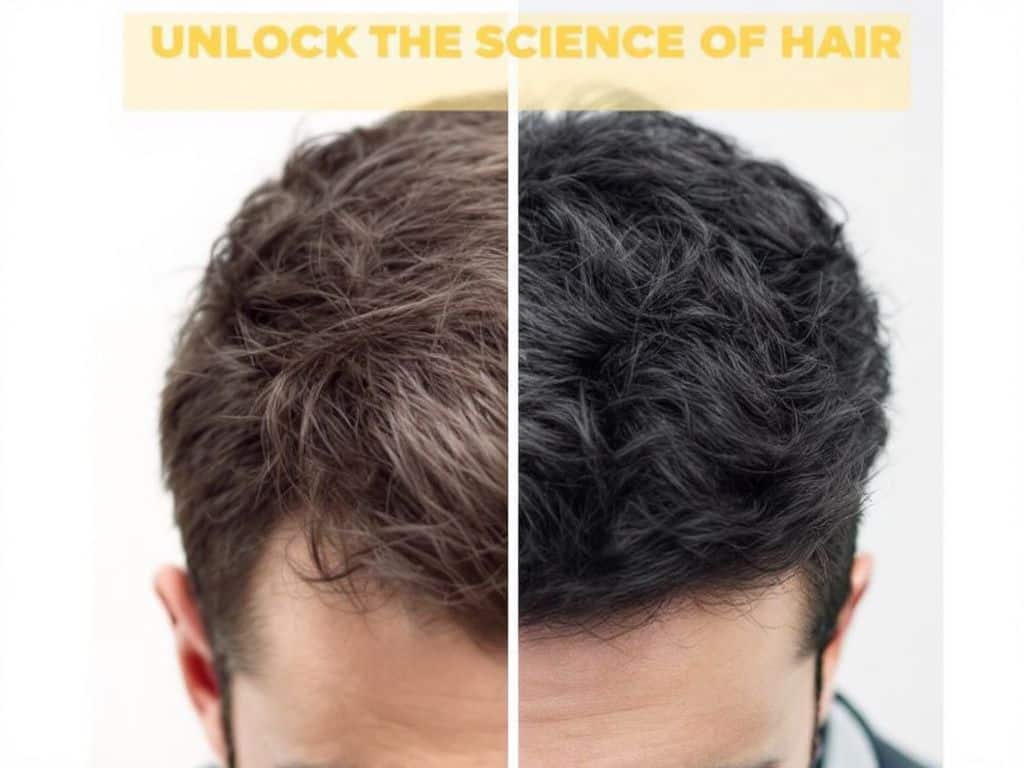
Understanding what really drives effective hair growth is a challenge that integrates aspects of dermatology, genetics, and advanced chemistry. With so much buzz around miracle products and age-old remedies, deciphering the credible science from the marketing fluff is both crucial and daunting. Let’s delve into the hard data, separating myth from reality with proven insights from rigorous clinical studies.
The Science Behind Hair Growth: Foundation before Application
Hair growth is a complex biological process, yet fundamentally, it involves a cycle of growth (anagen), rest (telogen), and shedding (catagen). Research into this cycle has illuminated numerous factors influencing hair health, from hormonal changes to cellular signaling pathways.
Follicular Dynamics: The Core of Growth
At the heart of this process are hair follicles, dynamic structures that operate under the influence of genetic and environmental factors. Follicles undergo remarkable transformations through the hair cycle, and understanding them is critical to grasping how interventions can affect hair growth.
- Clinical Insight: Studies like those published in the Journal of Investigative Dermatology highlight that disturbances in follicular dynamics, such as shortened anagen phases or elongated telogen phases, can lead to hair thinning conditions commonly seen in androgenic alopecia.
Key Factors Influencing Hair Growth
- Genetics: The genome dictates hair characteristics and responsiveness to various growth treatments.
- Hormones: Androgens, notably dihydrotestosterone (DHT), play a pivotal role in conditions like male pattern baldness.
- Nutrition: Iron, zinc, and specific amino acids deepen hair health discussions, affecting cellular processes involved in follicle regeneration.
Proven Therapeutic Approaches and Clinical Trials
Clinical trials and scientific findings provide concrete evidence on therapies and interventions that meaningfully impact hair growth. Here are the most noteworthy among them:

Minoxidil: The Gold Standard 🏆
Minoxidil—branded as Rogaine among other names—remains a mainstay in hair growth therapies. FDA-approved, this topical solution has a substantial evidence base supporting its efficacy.
How It Works
Minoxidil acts as a vasodilator, enhancing blood flow to hair follicles. The result is prolonged anagen phases, leading to increased follicle size.
- Study Analysis: A robust randomized clinical trial involving over 900 participants, reported in the American Journal of Clinical Dermatology, found significant hair density improvement in those using 5% minoxidil solution after 48 weeks.
Finasteride: A Hormonal Approach 📊
Another FDA-approved intervention, Finasteride, addresses hair loss by inhibiting the conversion of testosterone to dihydrotestosterone (DHT), famously linked to follicular miniaturization.
Mechanism
By reducing scalp DHT levels, Finasteride fosters an environment conducive to hair growth. However, it’s prescribed with caution given potential systemic hormonal effects.
- Clinical Findings: A study published in The Journal of the American Academy of Dermatology reflected a 70% improvement rate among men using Finasteride over a year, illustrating its capacity to not just halt hair loss, but promote regrowth.
Platelet-Rich Plasma (PRP): Harnessing Natural Healing
The application of PRP involves injecting concentrated platelets into the scalp derived from the patient’s own blood. This regenerative therapy utilizes growth factors present in platelets to stimulate follicular call back to the anagen phase.
Evidence-Based Benefits
- Statistical Insight: A systematic review in the International Journal of Trichology summarized multiple trials, indicating 50% improvement in hair density after a trimester of PRP sessions.
Nutritional Supplementation: A Supportive Role

While not an immediate front-line treatment, nutrition plays a vital adjunct role in treating underlying deficiencies that often coincide with hair loss.
The Importance of Micronutrients
A meta-analysis in *Dermatologic Clinics* shed light on deficiencies—like iron and zinc—detrimentally impacting hair quality. This has led to therapeutic offerings of supplements like Biotin and Zinc, which garnish positive anecdotal success stories even if their effects aren’t universally quantified in vigorous RCTs (randomized controlled trials).
Evaluating Emerging Therapeis through Research
With the surge in innovations, it’s paramount that emerging treatments undergo stringent testing. Let’s assess some progressive advancements under current investigation:
Low-Level Laser Therapy (LLLT) 🌟
Fascinating results from controlled settings demonstrate LLLT’s potential, using LEDs or lasers to invigorate hair follicles, potentially enhancing mitochondria cell function.
- Study: In a double-blind placebo study, published in the Lasers in Surgery and Medicine, there was an overall increase in hair count by about 20% within six months of usage without reported side effects, suggesting safety and moderate efficacy.
On the Frontier: Stem Cell Therapy & Genetic Approaches
Regenerative medicine has long promised hair regrowth possibilities. While actual human trials remain in rudimentary phases, promising animal model results predict a strong direction forward.
The Power of Possibility

Genetic editing techniques, such as CRISPR/Cas9, potentially correct genetic patterns causing hair follicle sensitivity and loss. However, these require extensive validation due to ethical complexities surrounding genome editing.
From Science to Application: Actionable Insights
For professionals recommending solutions or individuals seeking scientifically-backed options, here are key takeaways:
Practical Application Guide
- Combine Treatments: A regimen combining Minoxidil and Finasteride demonstrates synergistic effects above solo applications.
- Tailor to Individual Needs: Assess hormonal profiles prior to Finasteride use to minimize risks.
- Check Nutrition: Comprehensive blood work for deficiencies should precede nutritional interventions.
- Maintain Scalability: Incorporate adjunct LLLT between other therapeutic sessions for maximal output.
Understanding Side Effects and Management
Understanding possible side effects—such as topical irritation from Minoxidil or potential libido reductions from Finasteride—remains crucial for patient well-being and informed decision-making.
- Clinical Management: Awareness and early intervention via dose adjustments or added medications to mitigate side effects without compromising the primary benefit is a practice seen widely amongst dermatologists.
Institutional Guidelines and Recommendations 📜
It’s pivotal to rely on consensus documents such as those published by the American Hair Research Society and global dermatological associations when navigating patient pathways.
Conclusion: Aligning Science with Real-world Outcomes
Clinical studies form the backbone of any solid evidence-based practice ensuring veracity in recommendations and interventions for hair growth. By understanding the depths and contours of the science behind hair regeneration, professionals can synthesize real-world complexities with scientifically sanctified solutions. Whether through topical agents, hormonal manipulation, or cutting-edge approaches like PRP, the choices hinge on robust research to assure efficacy and safety for both patients and practitioners.
In the ever-evolving landscape of hair growth studies and texture research, the road to fuller, healthier hair is paved with clinical evidence and collaborative advancements. As methods continue to mature, prioritizing scientifically validated treatments ensures strides are grounded in verifiable fact rather than fiction. 🌿
Backed through written successes and peer-reviewed rigour, let this comprehensive guide empower you or your practice to make informed, reliable decisions for real and enduring outcomes in hair health.
Frequently Asked Questions
What are the benefits of using a hair mask in my hair care routine?
Using a hair mask can provide several benefits, including hydration, smoothing, strengthening, curl definition, heat protection, and damage repair. Hair masks infuse the hair with moisture, help coat the hair shaft to seal split ends, reduce breakage, and protect the hair from heat styling and environmental damage[1][4].
What ingredients should I look for in a hair mask?
Effective hair masks often include ingredients such as coconut oil, argan oil, shea butter, honey, avocado oil, green tea, and coconut water. These ingredients provide nourishment, moisturize, and protect the hair, offering benefits like softening, moisturizing, and protecting against damage[2][5].
How often should I use a hair mask in my routine?
You should use a hair mask whenever your hair feels dry, unmanageable, or in need of intense hydration. This can vary depending on your hair type and needs, but generally, using a hair mask once or twice a week can help maintain healthy and moisturized hair[1][4].
How do I apply a hair mask for the best results?
To apply a hair mask effectively, shampoo your hair first, then apply the mask, focusing especially on the ends where hair tends to be the most damaged. Leave the mask on for anywhere from 10 minutes to overnight, depending on the type of mask and your hair’s needs[1][4].
References


Leave a Reply